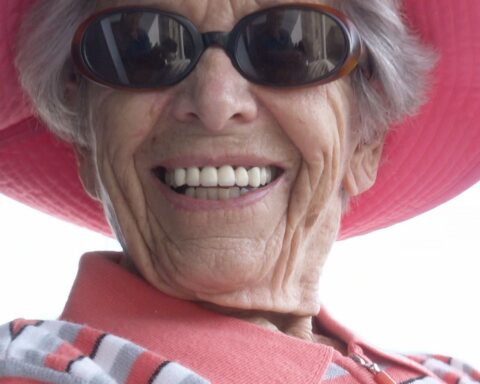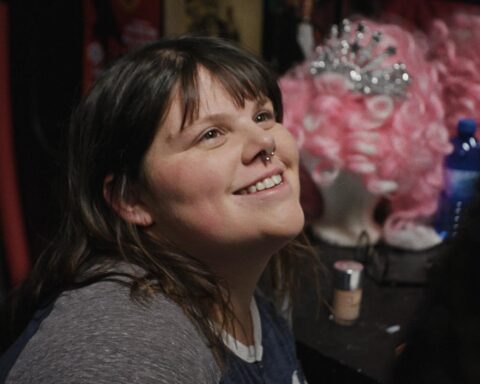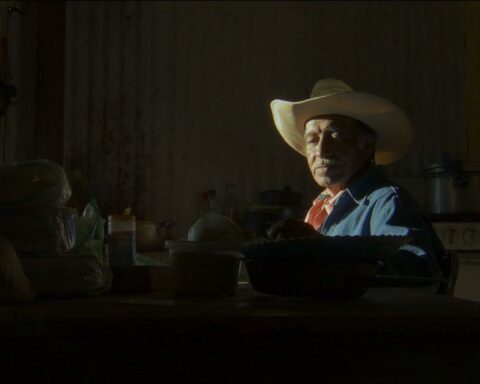Mental
(Japan/USA, 135 min.)
Dir: Kazuhiro Soda
Programme: Kazuhiro Soda: Making Images Speak
Near the end of his 2008 doc Mental, Kazuhiro Soda gets questioned by one of the psychiatric patients he’s interviewing. The man, a schizophrenic, who like many of the other patients in the film, shows clarity of mind that contradicts stereotypes about the mentally ill. The man asks Soda if his movie has a theme. What’s his point?
Simply and directly, the filmmaker tells the guy what he’s up to. No blah blah and folderol. There’s a curtain over the world of the mentally ill, Soda says, and he wanted to part it so that the “normal world” could see what the abnormal world was really like. Also, he was curious, Soda adds.
Perhaps it was curiosity that drove Soda into documentary filmmaking. As a young man in Tokyo he was about to join the corporate world when he balked at turning into yet another black-suited salary man. Somehow, he decided that he wanted to make films even though “It’s not like I was a cinephile or anything,” he told The Japan Times. “I liked watching Jackie Chan movies and Hollywood blockbusters and that was about it.”
Soda did go on to tell The Times that he was a devotee of Yasujirō Ozu’s meditative work, and reading an article about Jim Jarmusch convinced him to head for the US where he studied film. He has lived in the US since the 1990s.
As I write, Soda is at IDFA 2018, in competition with his film about a disappearing fishing village, Inland Sea. According to The Hollywood Reporter, the black and white doc is “primarily a work of simple and unapologetic humanism, happily in love with people.” Soda has also completed The Big House, his first made-in-the-USA movie with an American subject: Ann Arbor’s gigantic Michigan Stadium. RIDM 2018 programmed an extensive retrospective of the director-cinematographer-editor’s work: Making Images Speak.
Soda claims he doesn’t write treatments or outlines, shooting without much pre-planning of any kind. Many scenes in Mental seem like encounters between him and his subjects. Sometimes he talks to them, a no-no for Frederick Wiseman, whose fly-on-the-wall films made an impression on Soda in the US.
Mental takes you deep into the Chorale Okayama Clinic, a poor people’s mental health facility. Soda films patients doing things meant to be therapeutic: interacting with other patients, revealing themselves to the camera, and talking to Dr. Yamamoto Masatomo, an elderly man who becomes the film’s unofficial hero.
Capable of travelling to another city to rescue a patient in distress, Dr. Yamamoto works for almost nothing. Much of the clinic’s finances are spent on an unusually large staff, who take care of business and work close to patients, encouraged by the doctor to take action and make decisions. They cook and do various functional tasks. We watch staff members discussing recipes for cabbage, filling pill containers, handling financial matters, and dealing with funding cutbacks.
In Dr. Yamamoto’s cramped office, he zeroes in on the specific psyches of each patient. For one tormented man, he draws two diagrams of life from birth to death, one a linear straight line, one a circle. Which do you prefer?, he asks the man, who is clearly engaged and calmed by the question. He chooses the circle, pointing out that he’s a Buddhist.
Many of the people who appear in Mental suffer from depression to the point of wanting to kill themselves. They have friends who have committed suicide. They feel ashamed and are full of self-loathing. “Why can’t you be free?,” someone shouts at the end.
Most of Soda’s subjects are self-aware. One man realizes loneliness makes him “restless.” A man hears a voice he calls “The Invader,” encouraging him to commit crimes. At one point, the doc lingers on a pudgy woman who recites a litany of suffering so extreme that you think she might be fabulating.
At home, she hears a voice that tells her to get out on the street where she sometimes sleeps. Worse: the voice sounds like her dad’s. He left twenty years ago, and she has no memory of his face. When the woman married, not only was it a bad relationship, but her child was abused. Who was the abuser? I was, she answers. After a fight with her husband, she got angry with the baby who was overwhelming her. The baby died soon after.
Intermittently, Soda cuts away from the clinic to montages of the “normal” world outside. Birds take flight as we see luminous rivers, boats, bridges, and a girl serenely riding her bicycle.
Back inside, the second half of the film explodes with the emergence of the patient Sugano. A chain-smoking, bursting-into-laughter, probable genius, Sugano recalls how as a student, he maniacally studied 18 hours a day and did everything else in six, including a job. He snapped. In an exam room, Sugano wrote absolutely nothing and instead graded teachers on their skills. They assumed he was a lunatic and prodded him toward the nearest psychiatric facility.
Close to Dr. Yamamoto, who has helped him for years, Sugano delivers rapid-fire philosophical riffs and sometimes quotes Sister Teresa. Grief makes you kinder, he says. When you heal others, you heal yourself. To fight evil you must harbour a little bit of evil. Eventually, we discover Sugaro’s creativity as Soda dwells on the mental patient’s book of his photographs and poems, including funny mock haikus.
Sugano reminds me of Leonard Cohen’s brilliant mad poet friend Henry Moscovitch. Devoted to Henry and his work, Cohen wrote the forward to his last book. I knew Moscovitch late in his life, listened to him as he puffed weed insatiably, saying crazy things about writing to Queen Elizabeth, and educating her on the nuances of Chinese poetry. Then I read his final book, New Poems. Each tight, brief line is like a shot of light. How could someone so apparently confused be so blindingly clear? In his preface, Cohen wrote, “I know you stand where none of us would dare, I know you kneel where none of us would guess, well-ordered and alone, huge heart, self-pitiless.”
Appropriately, Mental peaks with Sugano’s appearance. He embodies the mystery of madness, the ambiguities and contradictions. And in the way Leonard loved Henry right up to his death in 2004, you sense Soda’s love for Sugano and the other people in his documentary.
Visit the POV RIDM Hub for more coverage from this year’s festival.
Mental (『精神』) from Laboratory X on Vimeo.











